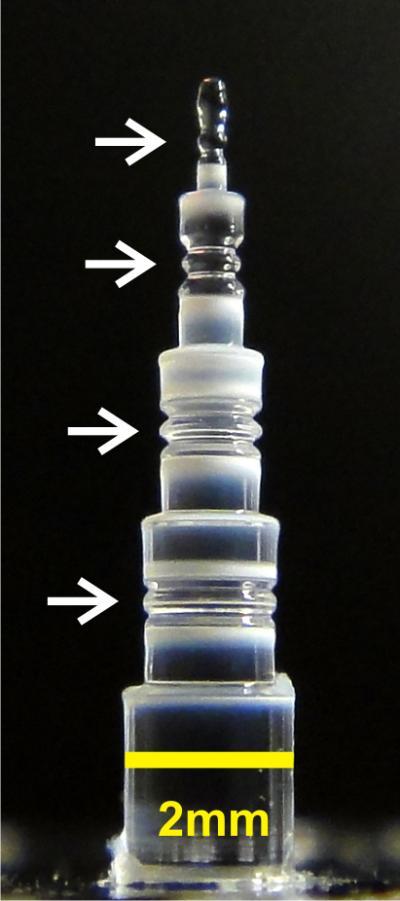DIY compact frequency combs
Atomic clocks, medical diagnostics and astronomy all need tools for measuring different colours of light. These laser frequency combs are getting smaller and simpler to make. They are not quite DIY for the average home handyman but they are getting there.
Physicists at the National Institute of Standards and Technology (NIST) can now make the core of a miniature frequency comb in one minute. By contrast, conventional microfabrication techniques may require weeks.
The NIST technique involves laser machining of a quartz rod to shape and polish a small, smooth disk within which light can circulate. The user controls the size and shape of this optical cavity, or resonator. Its diameter can be varied from about 0.2 to 8 mm and its thickness and curvature can be shaped as well. The quality factor - Q factor, which is a measure of the length of time light circulates inside the cavity without leaking out - equals or exceeds that of cavities made by other methods.
After machining the quartz, NIST scientists use a small, low-power infrared laser to pump light into it. A primary benefit of the high Q factor is that only a few mW of laser light are required to generate a comb.
“We make a resonator in one minute, and one minute after that we are making a frequency comb,” NIST researcher Scott Papp says.

You can watch a brief video of the laser machining technique with Scott Papp at http://www.youtube.com/watch?v=TiV9kdMa9t0.
NIST’s one-minute method is simple and far less expensive than conventional microfabrication. The system for the NIST process costs about $10,000 - most of that for purchase of a carbon dioxide laser used for cutting - compared to between $1 million and $10 million for a microfabrication system that must be used in a cleanroom.
A full-size frequency comb uses high-power, ultrafast lasers and is generally the size of a small table. NIST researchers have been making compact frequency combs for several years and often make cavities out of bulk fused quartz.
By confining light in a small space, the optical cavity - which, confusingly enough, is solid - enhances optical intensity and interactions. The comb itself is the light, which starts out as a single colour or frequency that through optical processes is transformed to a set of additional shades, each sharply defined and equally spaced on the spectrum. A typical NIST microcomb might have 300 ‘teeth’ or ticks on the ruler, each a slightly different colour. A key advantage of microcombs is the ability to tune the spacing between the teeth, as needed, for applications such as calibrating astronomical instruments. The spacing is determined by the size of the cavity; a smaller cavity results in wider spacing between the comb teeth.
Scientists plan to apply for a patent on the machining technique, which could be applied to a variety of other glassy materials. Future NIST research will focus on continuing improvements in comb performance and use of the resonators in other compact applications such as optical frequency standards and low-noise microwave oscillators.
A non-destructive way to locate microplastics in body tissue
Currently available analytical methods either destroy tissue in the body or do not allow...
Rapid imaging method shows how medicine moves beneath the skin
Researchers have developed a rapid imaging technique that allows them to visualise, within...
Fluorescent molecules glow in water, enhancing cell imaging
Researchers have developed a new family of fluorescent molecules that glow in a surprising way,...



